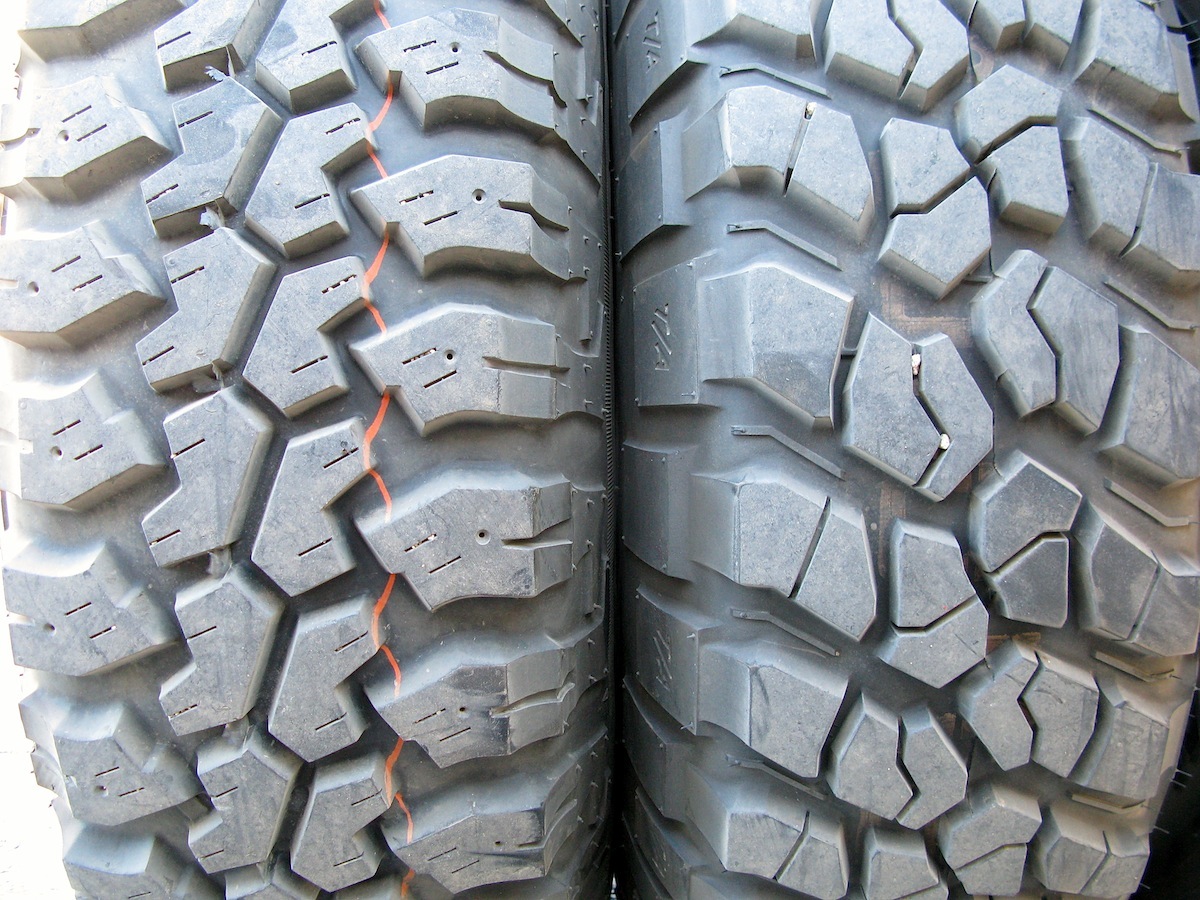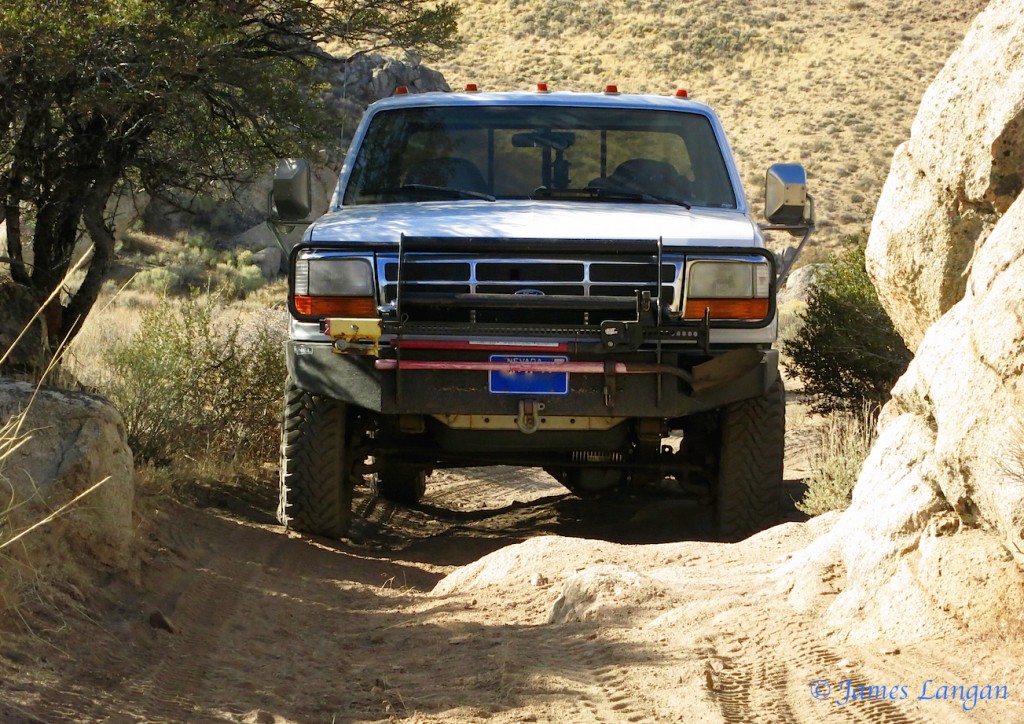
It’s time to finish this slow, drawn-out tire review. If you need some background read the previous related post here: Toyo M/T Part 5
After a mere 1,278 miles traveled over twelve days, the measured treadwear on this set of 255/85R16E Toyo M/T tires went from 19/32″ when new, to 18/32″ on the front axle and 17/32″ on the rears.
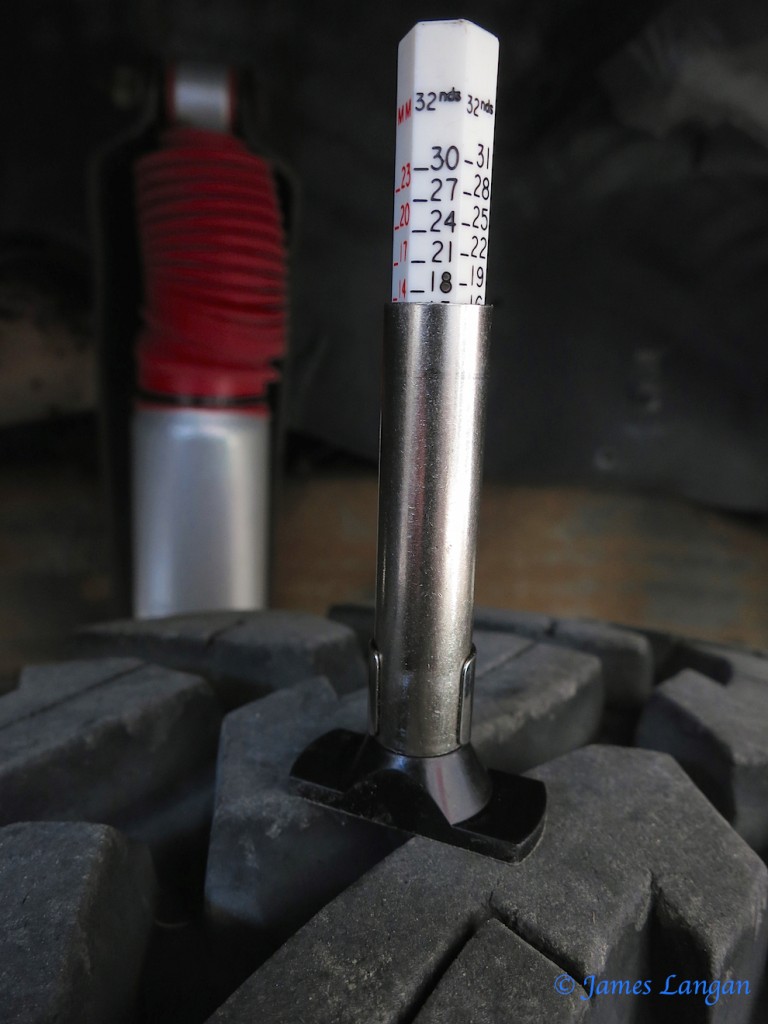
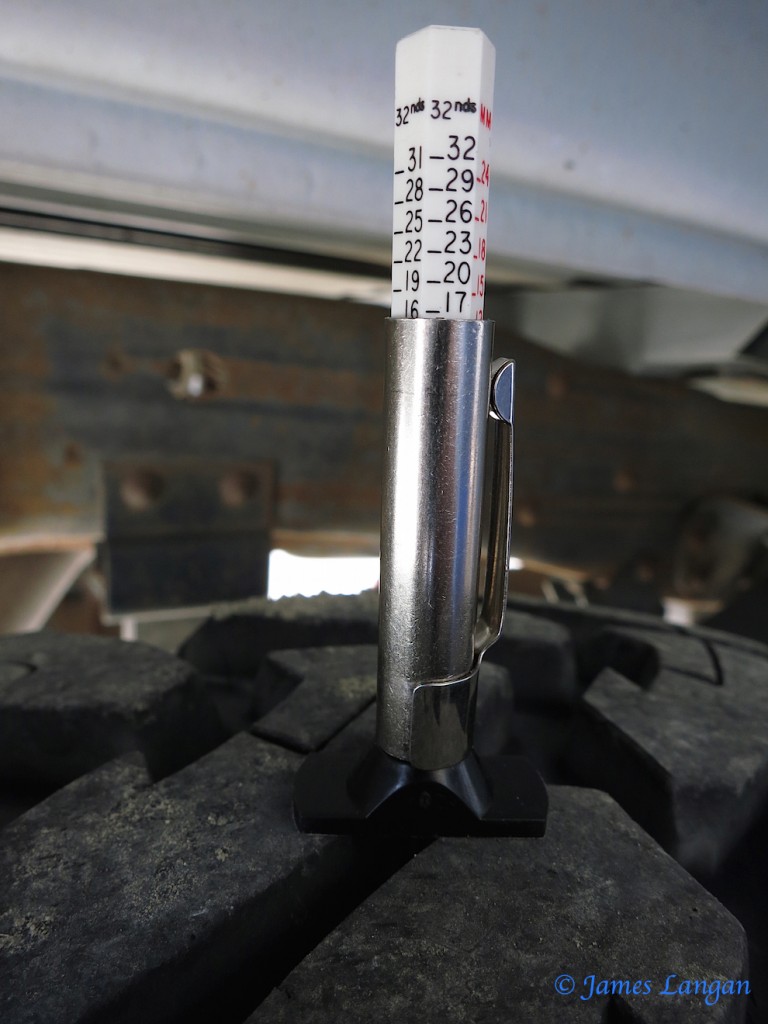
It’s well known that diesel torque, weight, towing, and high speeds all contribute to wear, and sometimes tires wear faster initially, then slow to a more palatable rate. However, after removing a set of Dick Cepek F-C II 285/75R16D tires that were hardly wearing, same as when they were mounted on a lighter rig, this Toyo M/T wear was unacceptable. While I’d run sets of Toyo M/Ts before, I’d put them on a lighter Toyota 4Runner and a 2005 Jeep TJ, and hadn’t experienced this kind of wear. The old F-350 T444E/7.3L Power Stroke was not a daily driver—logging few miles per year, though most were working—so the tires could have lasted years if I would have left them on the truck.
We can’t always have new tires, but I prefer deep rubber, tread that not only starts meaty but stays that way for a while. Depth and void are critical components of traction, so shallow tread not only means less longevity, but also potentially less grip, sooner, after fewer miles.
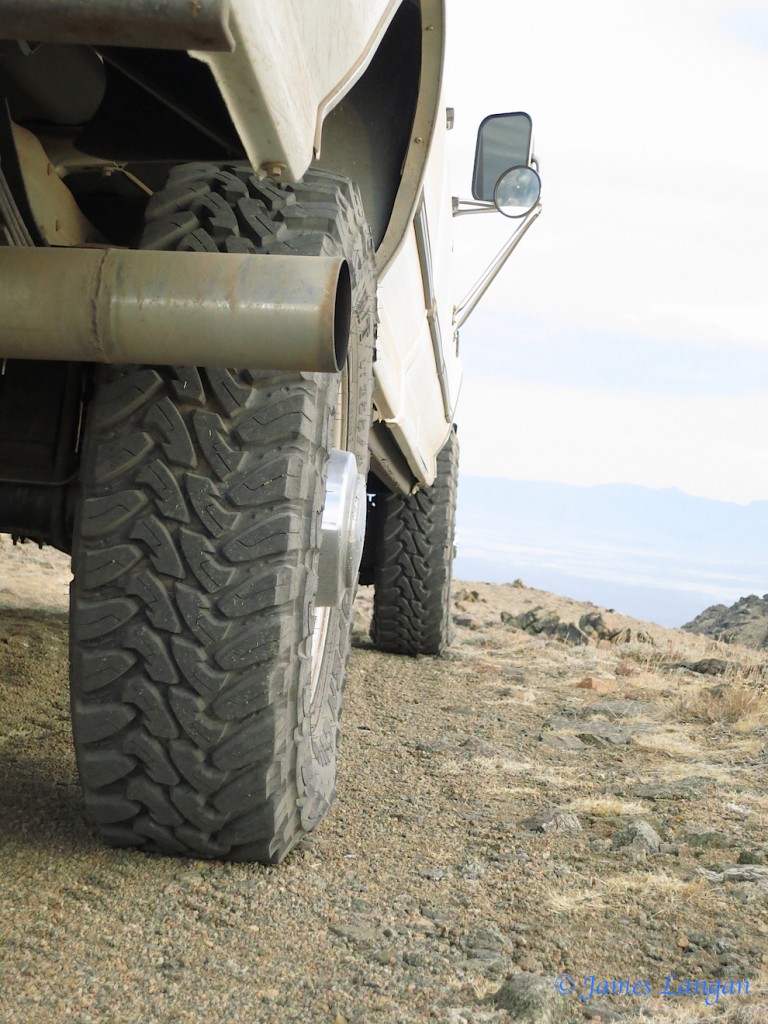
There was another niggle, the extremely common right-pull of the Toyo muds. I had resigned myself to living with this on the F-350, but combined with the fast wear it more than I cared to tolerate.
My solution was to return the tires for a “ride complaint”. Some manufacturers offer customers this resolution for certain issues, sometimes they even advertise this warranty for new patterns, or for lines that have proved exceptionally popular and/or reliable. However, even when this option is available it typically expires after more than 2/32″ of tread are consumed…which was going to occur in less than 2,000 miles! In this situation I’d more than earned this option with one of my local Les Schwab dealers, having purchased many sets of tires for several platforms in recent years. The truck had to wear shoes, but which ones? A few sets of 285/75R16 treads had been squeezed onto the factory 16 x 7-inch forged aluminum Alcoa wheels, though I much prefer the 255/85 size. Same height, look great, less filling. This quickly narrows the options and I needed to buy them from Les Schwab Tires.
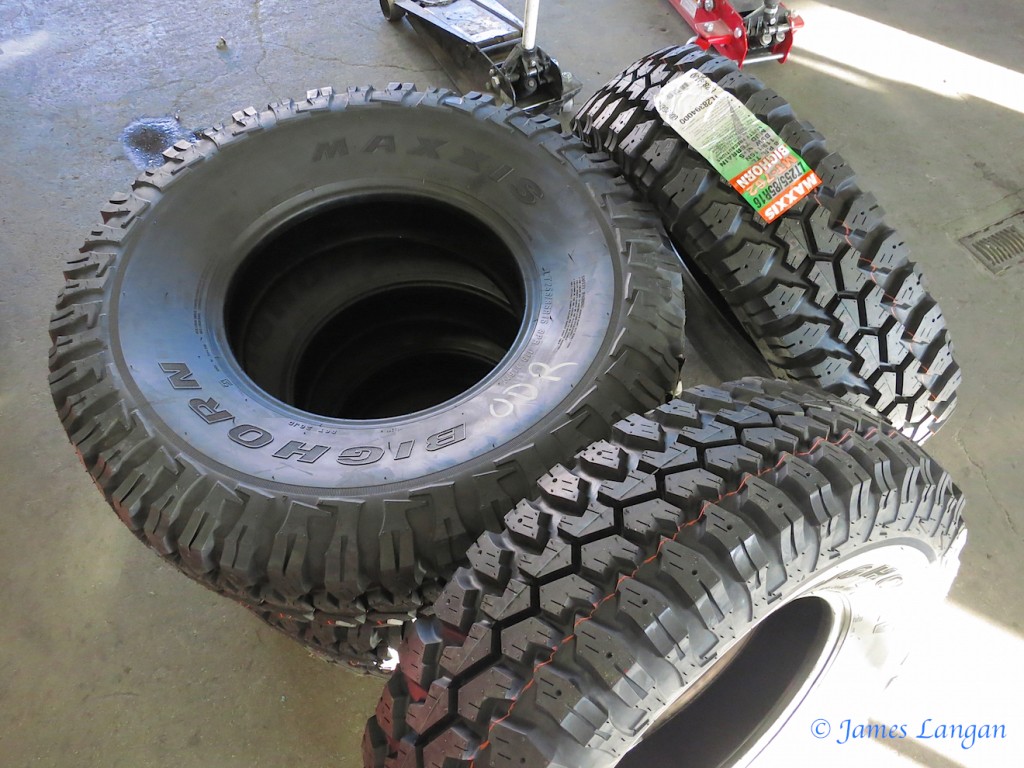
Maxxis Bighorn MT-762
Les Schwab is not the least expensive tire dealer around; in fact they can be comparatively expensive these days since Discount Tire moved into the region. Yet, through the years I’ve been mostly happy with the service from most dealers, and willing to pay a little extra depending on the products and services. The Toyo M/T has always been a relatively expensive tire, particularly from Les Schwab dealers, while Maxxis Bighorns have been a good value. When I purchased my first set of Bighorns from Les Schwab several years ago they were a deal, and the prices still seem relatively good in 2016. Then and now, similar dollars are needed to buy five LT255/85R16 Bighorns, or four Toyo Open Country muds, so I did.
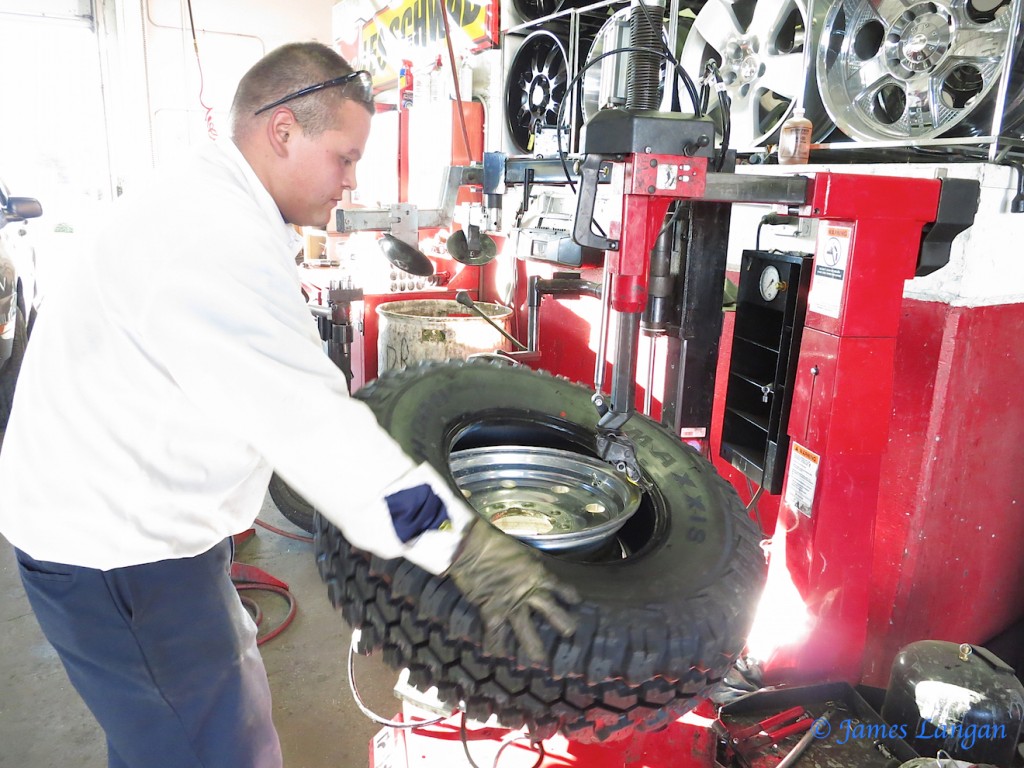
The Bighorns are not a zero compromise choice or design. They also wear fast, even on lighter platforms, and by modern standards they are loud. But if tolerating rapid wear was a necessity, I’d prefer a less expensive product. Plus, they have never caused any of my rigs to drift right (Toyota, Jeep, or Ford), have provided excellent traction in most terrain, and are more flexible at a given pressure while offering a more comfortable ride. All tires can be punctured, but I’ve yet to put a hole in a Maxxis tire; though I did have a sidewall split on my first set on the same F-350, which was replaced under (pro-rated) warranty.
Still A Toyo Fan
I’m compelled to share that while this set of Toyos were a disappointment at the time and I decided to dump them, I’m still a fan of the Toyo brand. Toyo makes high quality tires that typically require little weight to balance, and I’ve purchased another set of Toyo truck tires recently. Wear is not always the predominant factor when choosing new rubber, and all tire choices involve compromise.
As critical as I was of the wear at the time, over the past two years I’ve again been driving heavy diesel pickups regularly, have seen similar, rapid tire wear, and with more than one brand. Those details will have to wait….
© 2016 James Langan/RoadTraveler




